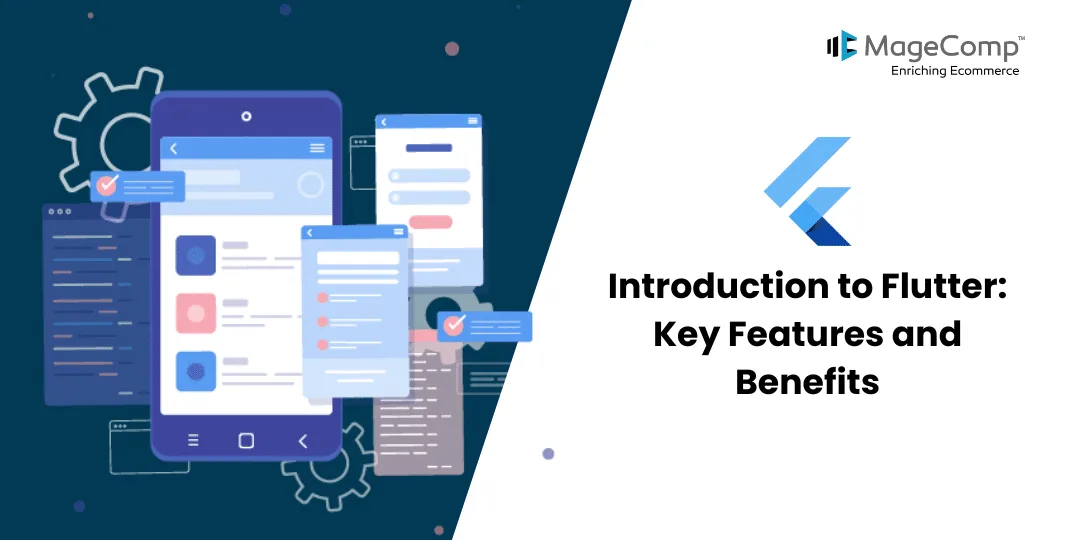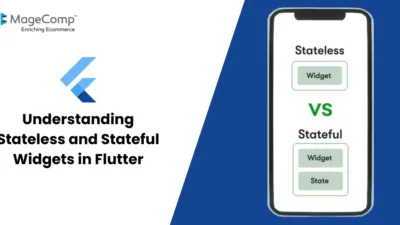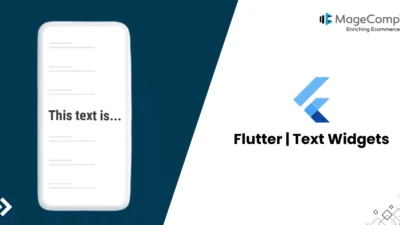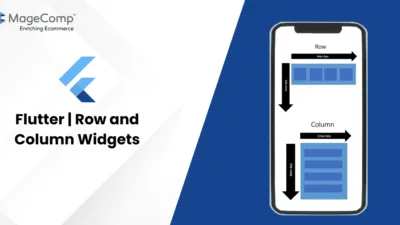Welcome to our new blog category dedicated to Flutter, Google’s open-source UI software development toolkit. Whether you’re a seasoned developer or just beginning your journey in app development, this series will guide you through the essentials and advanced concepts of Flutter.
Are you an app developer looking to streamline your workflow and reach a wider audience? Look no further than Flutter! This innovative framework from Google is taking the mobile app development world by storm, and for good reason.
In this first post, we’ll introduce Flutter, highlighting its key features and the benefits it offers for mobile app development.
What is Flutter?
Flutter, an open-source UI software development kit created by Google, has been making waves in the mobile app development world since its release in 2017 due to its simplicity, efficiency, and versatility. It allows developers to build natively compiled applications for mobile, web, and desktop from a single codebase.
Flutter is a comprehensive app SDK developed by Google. It includes a framework, widgets, and tools that enable developers to build beautiful, fast, and natively compiled applications for any platform. The core language used for developing Flutter applications is Dart, which is also developed by Google.
Key Features of Flutter
Single Codebase for Multiple Platforms
One of the standout features of Flutter is its ability to use a single codebase to build applications for multiple platforms. This means you can write your code once and deploy it on iOS, Android, web, and desktop platforms, significantly reducing the development time and effort required for creating apps for different operating systems.
Hot Reload
Flutter’s hot reload feature allows developers to see the results of their code changes in real-time on the emulator or device, without restarting the app. This makes the development process faster and more efficient by allowing for quick iterations and experimentation.
Rich Widget Library
Flutter comes with a rich set of pre-designed widgets that are highly customizable and adaptable. Widgets are the building blocks of a Flutter app, and they provide a unified object model for layout, drawing, and event handling. This makes it easy to create complex UIs with minimal code. These widgets follow Google’s Material Design and Apple’s Cupertino design principles, enabling developers to create visually appealing and consistent user interfaces.
High Performance
Flutter’s engine is built with C++, and it uses Dart as its programming language. The framework compiles Dart code into native code, ensuring high performance for Flutter applications on both iOS and Android. The framework uses the Skia graphics engine, ensuring smooth and fast rendering of graphics and animations. Additionally, it eliminates the need for a JavaScript bridge, reducing the risk of performance bottlenecks.
Beautiful UI Design
Flutter provides extensive support for Material Design and Cupertino (iOS-flavored) widgets, enabling developers to create visually appealing applications that follow platform-specific design guidelines. It offers a layered architecture that enables customization, combining different widgets to create intricate and dynamic interfaces.
Strong Community and Ecosystem
Since its release, Flutter has garnered a strong and active community. There are numerous packages and plugins available through the Flutter ecosystem, which can help you add functionality to your apps without reinventing the wheel. The community also provides ample support and resources for developers of all skill levels.
Benefits of Using Flutter
Faster Development
Flutter’s single codebase, hot reload, and extensive widget library make the development process faster and more efficient. Developers can quickly prototype and iterate on their ideas, reducing the time to market for their applications.
Cost-Effective
By using a single codebase for multiple platforms, Flutter significantly reduces the resources needed for development and maintenance. This cost-effectiveness is particularly beneficial for startups and small businesses looking to maximize their budget as there’s no need to hire separate teams for iOS and Android development.
Consistent UI and Business Logic
With Flutter, you can maintain consistent UI and business logic across different platforms. This consistency ensures a seamless user experience and reduces the chances of platform-specific issues.
Access to Native Features and SDKs
Flutter provides plugins that allow seamless integration with the device’s native features, such as GPS, camera, and storage. This ensures that developers can utilize platform-specific functionalities efficiently.
Enhanced User Experience
The rich set of widgets and high-performance rendering provide a smooth and visually appealing user experience. The customization capabilities of Flutter’s widgets enable developers to create unique and engaging user interfaces.
Open Source and Free
Flutter is open-source and free to use. This accessibility encourages a larger developer community and continuous improvements to the framework, backed by Google’s support.
Growing Popularity and Support
Flutter’s growing popularity means better support, more third-party integrations, and a larger pool of experienced developers. Google’s backing also ensures that Flutter will continue to receive updates and improvements, making it a reliable choice for the long term.
Final Words
Flutter is transforming the way developers approach mobile app development by offering a robust, efficient, and versatile framework. Its ability to streamline the development process while delivering high-quality, natively compiled applications makes it an ideal choice for both new and experienced developers. Whether you aim to build a simple app or a complex enterprise solution, Flutter provides the tools and flexibility to bring your vision to life.
Stay tuned for our upcoming posts where we’ll delve deeper into Flutter’s components, best practices, and advanced techniques.












